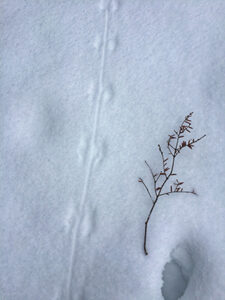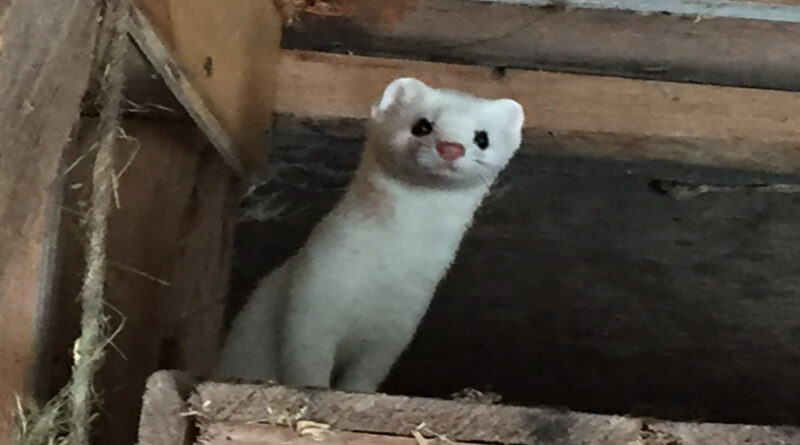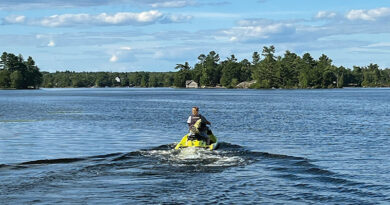Get to Know Your Furry Neighbours!
The animal tracks you see in snow are like wildlife signatures, letting you know who was here before you. With just a little bit of knowledge, you can get a glimpse into the lives of the wildlife that live in the neighbourhood.
Knowing your tracks starts with understanding gait or the pattern of four footprints. Each animal presents a baseline gait which is the most common pattern of movement for that species. These include the diagonal walk (humans, felines, deer, moose), the bound (rabbits, hare, most rodents), the lope (the weasel family) and the trot (canines, shrews). These gaits will vary depending on the urgency of movement needed and the type of substrate (snow, sand, mud, etc.) the animal is travelling on.
is the most common pattern of movement for that species. These include the diagonal walk (humans, felines, deer, moose), the bound (rabbits, hare, most rodents), the lope (the weasel family) and the trot (canines, shrews). These gaits will vary depending on the urgency of movement needed and the type of substrate (snow, sand, mud, etc.) the animal is travelling on.
Other identification features are the track length called stride and the track width called straddle. Knowing the length and width of the track will narrow down the possibilities, however, it can be a lot to configure out on the trail. One simple trick I learned from a colleague at Fleming College is that you can use the finger method to help identify small mammal tracks. If the straddle is about the width of your thumb, it is likely a shrew. This busy, small insectivore stays active all winter hunting for insects, spiders, slugs and earthworms. These pointy nosed pugilists are active day and night, almost always on the hunt.
If the track width is about equivalent to your middle and index finger together, this is likely either a mouse or a vole. The difference? Voles are stockier and have shorter tails. Their eyes and ears are smaller because they spend more time below ground than mice. Mice are thinner, have bigger ears and eyes. Their long tails often drag in the snow between prints.
If the straddle is about the width of your three middle fingers, it is likely a chipmunk. Four fingers, a Red Squirrel, and a full hand wide, that is you’re the bigger Grey Squirrel (which are also black). These are just estimates but this “handy” guide can help you to narrow down some of the small critters in your neighbourhood.
Other good cues to track identification are patterns of movement. For example, it is difficult to identify members of the canine family. A mid sized dog and a coyote can have the same size print. A print pattern that meanders and stops at every tree is likely a dog. A straight-line pattern is more common for the energy conserving wild canines. If you see a small track set that appears to drift from side to side but travels, generally, in one direction it is likely a Stripped Skunk. Active on mild winter days, this seemingly staggering pattern is the basis for the saying, “as drunk as a skunk!”
Going out to my backyard coop to feed my handful of laying hens, I saw a distinct track made by an ermine or short-tailed weasel. Very cute and all white in the winter except for the tip of its tail which is black, this small weasel is an active carnivore. Great for controlling small rodent populations but this small bundle of energy also likes to hunt birds. I now have less than a handful of laying hens.
The loping gait of weasels (short-tailed weasel, long tailed weasel, mink, martin, fisher and otter) is well suited to their long, narrow body and short legs. They move like a slinky – their hind legs land where their front feet have just landed, leaving behind a distinct 2 x 2 lope pattern common to the weasel family.
So, get to know your furry neighbours from their movement memory left in the snow. Each winter track tells a story, however, these wintery signatures can be fleeting, as new snowfall or a warm spell of weather can whisk away a track very quickly. Learning your tracks can make a simple walk in the winter more interesting and it can expand your intimate knowledge of your most cherished natural places and those you share them with.
Submitted by Rick Whitteker. You can find Rick at home in the forest, as a seasoned trail guide, nature writer and passionate wildlife enthusiast in the Haliburton Highlands.




